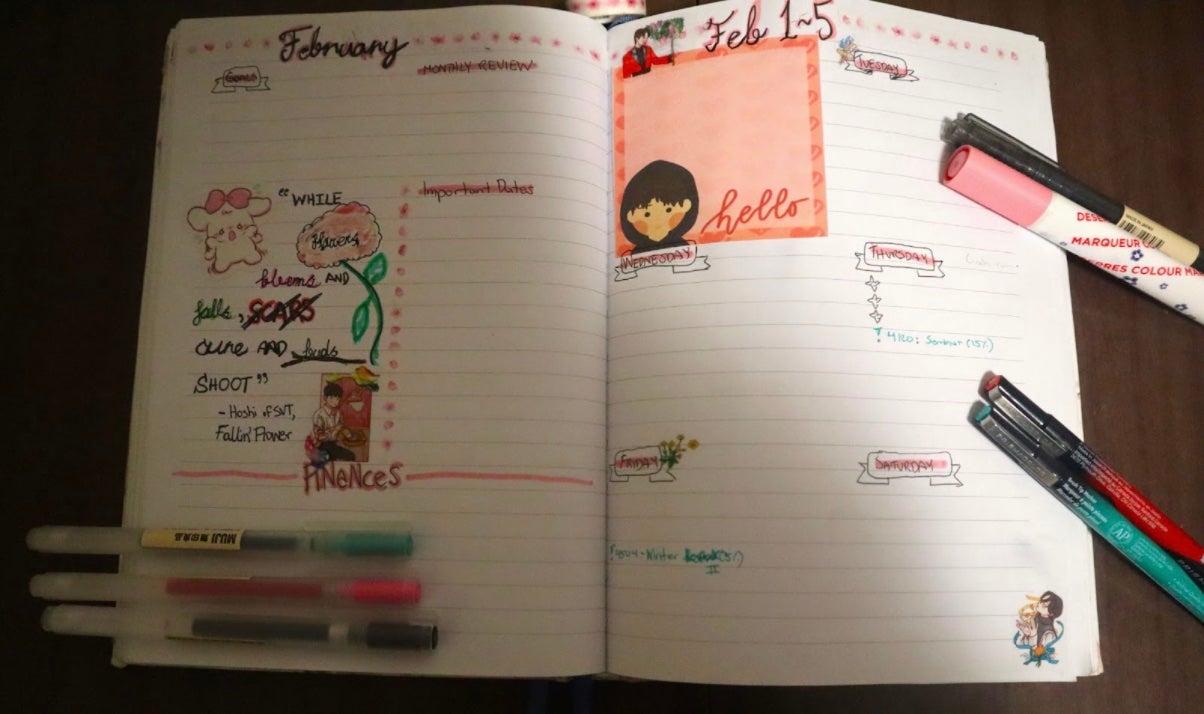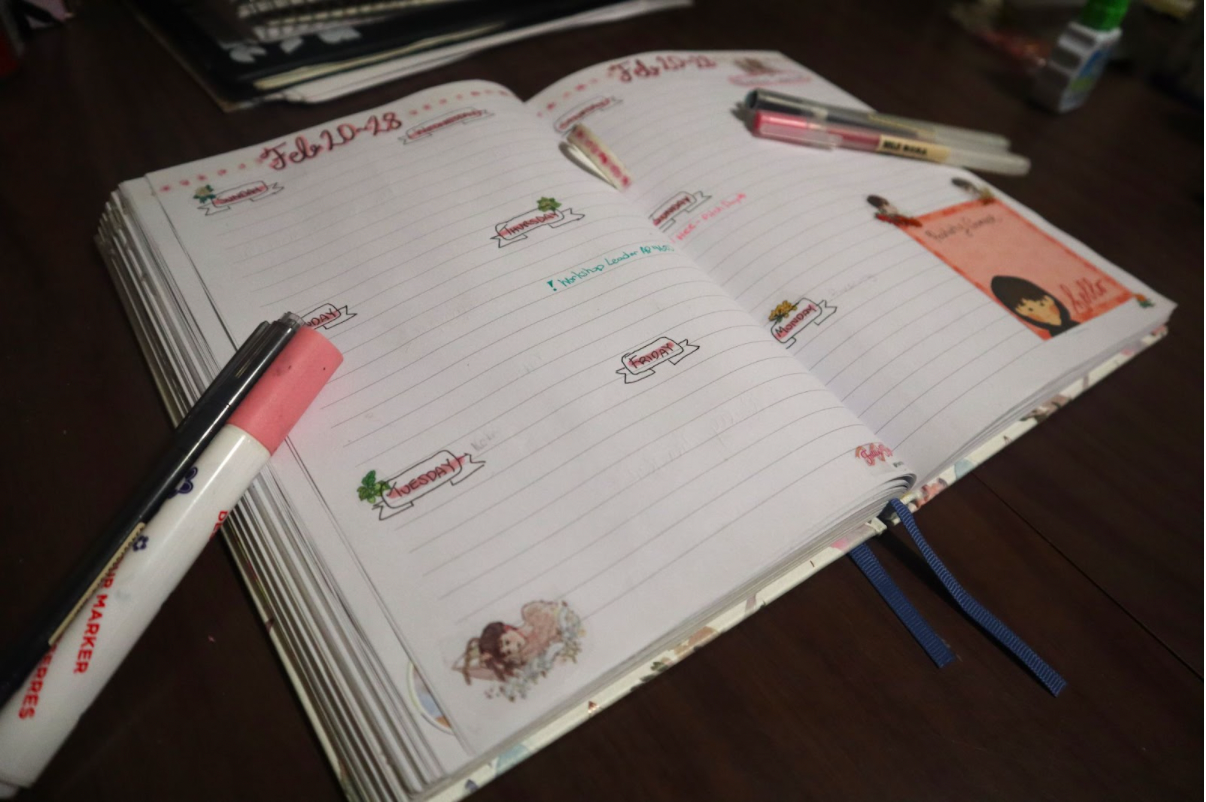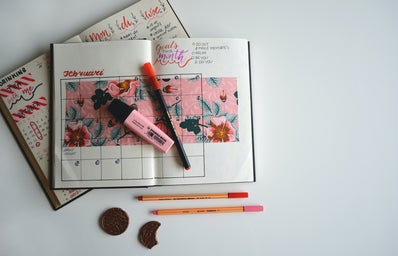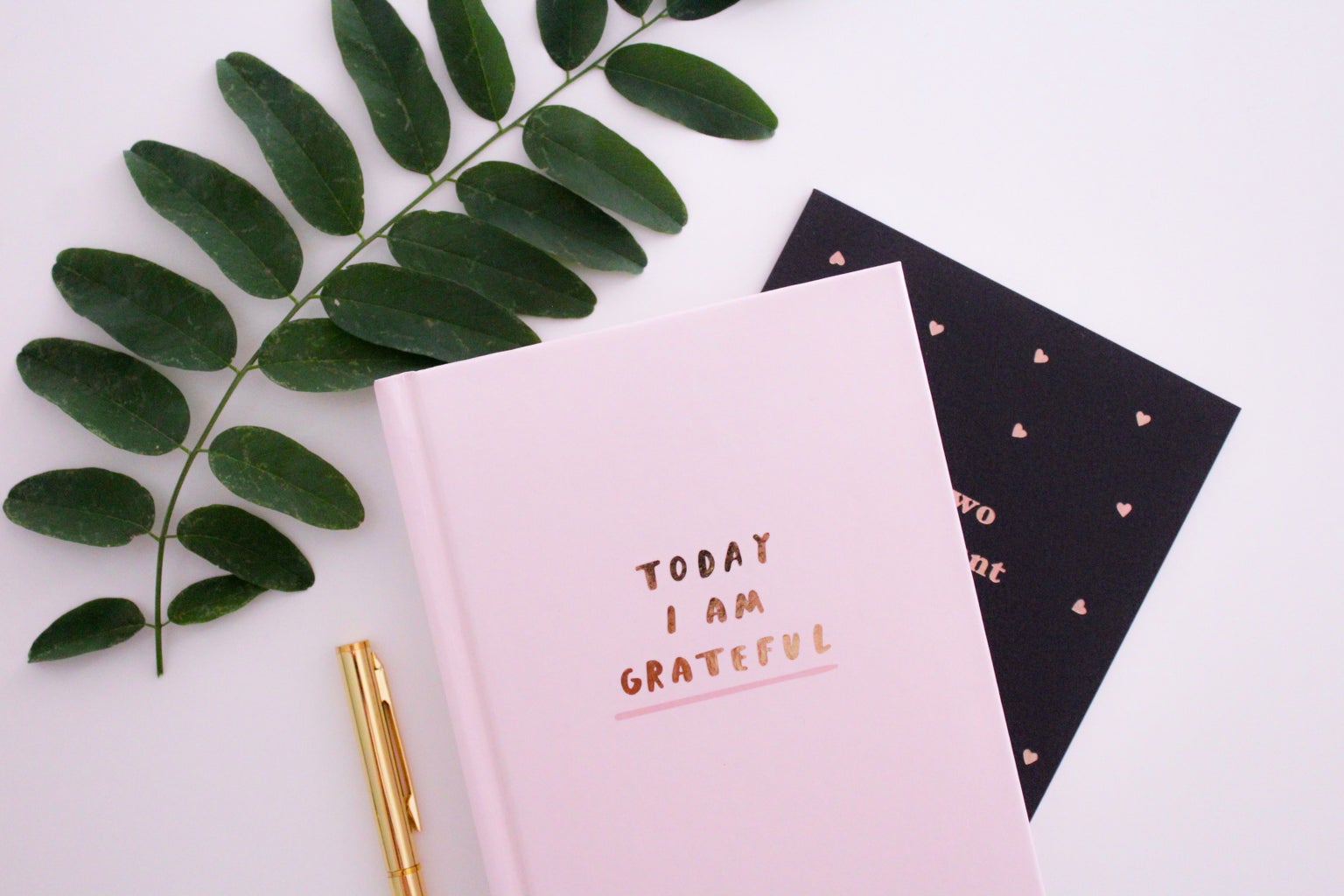As a full-time university student, it can sometimes be hard to keep track of everything and get things done. Things can pile up and we find ourselves procrastinating on the very last day, which can be mentally exhausting and stressful.
Since 2017, I’ve been using a bullet journal. It’s something that’s been helping me with being organized, and is also a creative outlet for me. Plus, it’s fun looking back to see what I was doing, and how far I’ve come since then.
What Is A Bullet Journal?
A bullet journal, also known as “bujo,” is a do-it-yourself agenda/journal that consists of bullet points, and is used for logging in your daily and weekly tasks, similar to how an agenda functions. They are usually done on a dotted grid style journal, but can also be created using normal lined or blank journals. However, dotted paper is easier for setting up things like habit trackers.
A bullet journal is something that is personalized, so what it contains is up to the user. There can be reading logs or movie logs which can be set up seasonally, as well as long-term/short-term goals and bucket lists, which can be set up annually. Other fun things to add are financial trackers, so you can record how much you’ve spent on items, such as food, transit, clothes, etc.
You can also use it to track your habits or hobbies, such as drinking enough water, getting enough sleep or practicing the piano. You can also decorate your pages with things like stickers, washi tape, sticky notes or your own illustrations. The possibilities are endless with bullet journalling.

Setting Up Your Bullet Journal for Your Courses
Note: This is set up based on a 6 ¾” x 9.5” lined journal.
- Set up the first page for all of your assignment/coursework due dates
-
Split the page into equal sections, depending on how many months you are enrolled for the year. For example, I had split the page into two sections vertically, with one side for the fall term and the other for the winter term. Then, both sides were divided into four sections. For each month, list all of your due dates chronologically.
It may help to use a separate sheet to write everything down roughly first, so that it’s easier to transfer the information into your bullet journal. If you want, you can color-code each course by using a different colored pen.
You can either do it for each term, or you can put the entire school year on a page or two, depending on how much space you need to put everything down.
- Make your monthly spread
-
The top ⅕ of the page is split into two sections vertically. Here, you can put your goals — normally I would put down three. On the other side, I put down the review, so I can comment on how well I did at the end of the month.
For the middle ⅖, use the left half of that space to write down a monthly quote for inspiration. It can be something based on the month, or you could go with something that inspires you. The other half is used to list important dates, which can include appointments, birthdays, due dates or other major events.
Personally, I use the bottom ⅖ horizontal portion to calculate my spending and earnings at the end of the month, but you can use this space to create a monthly tracker for habits. Some ideas to track are taking vitamins or drinking six glasses of water daily.
- Write your weekly spreads (usually 2 pages long)
-
For each page, reserve either the top or bottom ⅕ space horizontally. This is where you can be creative and add your own stuff. Personally, I use one for my weekly tracker for creativity, such as writing and drawing, and the other is for song lyrics.
Divide the remaining space into four equal sections per page, and use seven of them for the week. The single section can be used for various purposes, such as a grocery shopping list, or your favorite quote of the week. You can also use it to add your own drawings, or maybe even a photo of a special memory that occurs that week. I placed a sticky note for mine, and it’s for my highlights of the week.
When it comes to the beginning and end of the month, there can be incomplete weeks. I usually either use a single page if there are only 3-5 days in that week (Sun-Tues/Thurs-Sat to Sun-Thurs/Tues-Sat) or add those 1-2 days (Sun-Mon to Friday-Sat) to the next/previous week in the normal two-page spread. If there are only six days that week, then just do the normal two-page spread and use the extra section for something fun.
For example, the first week of February 2022 is only five days long, so I would split a single page into six sections, and use five for that week. On the other hand, February 27-28 is only two days long, so I would add them to February 20-26, making a weekly spread for nine days.
Tip: It’s best to allocate a block of time to make the spreads for one term
Depending on your creativity level, it usually takes around 1-2 hours. However, the more you want to decorate, the more time it will take. Trust me, you won’t have time to make it for the upcoming month, especially during exam season, so you may as well set up your template for those four months. It’s yours to experiment and personalize!
If you’re looking for inspiration, there are print sources available. One book that I use is Bullet It! Lists for Living by Nicole Lara. Of course, the internet is also free. There are always awesome people posting their styles and templates on social media under the #bujo tag or on Youtube.

How To Effectively Use The Bullet Journal
- Mark down all assignment dates and appointments as soon as you know them
-
Put them down on your monthly template as part of your important dates, and then accordingly on the days within your weekly spreads. I like using a bright color (re: the teal ink) so that it stands out.
- Only have 2-3 main large tasks daily, and 2-5 smaller tasks
-
Assuming each main task takes 1.5 hours to complete, then depending on your schedule, place your most time-consuming tasks first. All three tasks should take up a maximum of 4.5 hours. Adding more than that will burden you, and is not realistic. This is based on being a full-time student, so adjust accordingly if you work or only do so part-time. The smaller tasks should take less time and are easier, ranging from 10-45 minutes to do. All together, they should take a maximum of 1.5 hours
Therefore, including your previous major tasks, everything should take up a maximum of 6 hours, and not a minute longer. Always leave some spare time if you can and overfill the slot for the day. Putting more down would only overwhelm you, cause you to deviate away and do nothing.
- Plan only for 3 days ahead
-
Having at least three dates down grounds you, and allows you to move tasks around if you don’t get to completing everything. However, that’s not to say you can’t plan further in advance. For example, if you have an upcoming essay due, and you know how many days you’ll be dividing it into times to research, write, and edit, by all means, do that. Just don’t pack schedules that are weeks ahead. Over-planning will make things overwhelming.
- Remember to take breaks, and don’t punish yourself if you don’t complete everything. There’s always tomorrow
-
It may be obvious, but remember, you are not a machine. Burnout is real, so remember to take breaks in between your studies so that your brain can take the time to relax and absorb what you’ve learned. Some days may be tougher than others. We may get sick, and times when everything seems to go wrong. Either way, there’s always another day, so don’t stress it.
- The bullet journal should be something that helps you be productive, not hinder you
-
It may take a week or two to get into the habit of tracking your work, but afterwards, it should come naturally as brushing your teeth. Your bullet journal shouldn’t become a source of stress. If after a while it becomes overwhelming, perhaps allocate fewer tasks to do; only do what’s important. Are some days more packed than others? Are you more productive in the morning, day, or night? Rearrange your schedule until it is something that is both comfortable and doable.
Once again, these are my own personal preferences for creating my bullet journal and maintaining my organization. You may find an alternative template that works more in your style. There’s so much out there to explore and try out. Remember that this is yours to develop as your own space, and to have fun! My hope is that this helps you jumpstart your productivity and that you finish this year with less procrastination.



